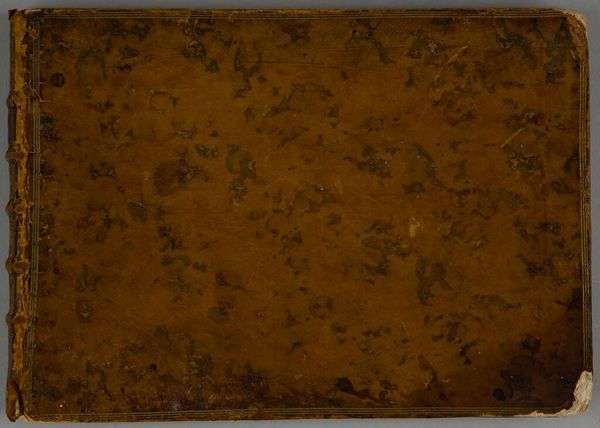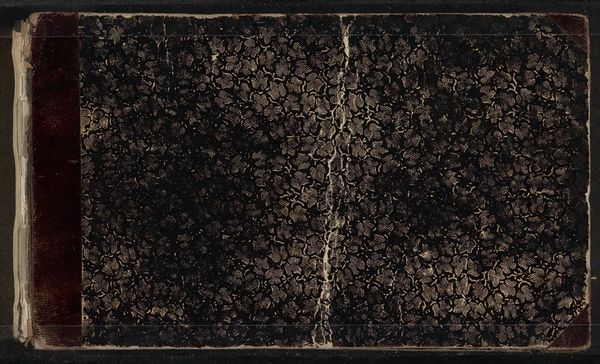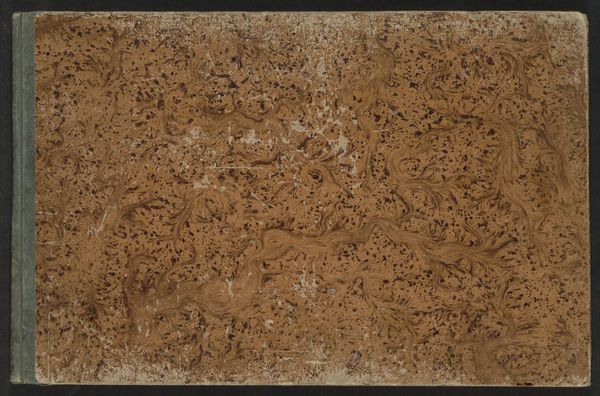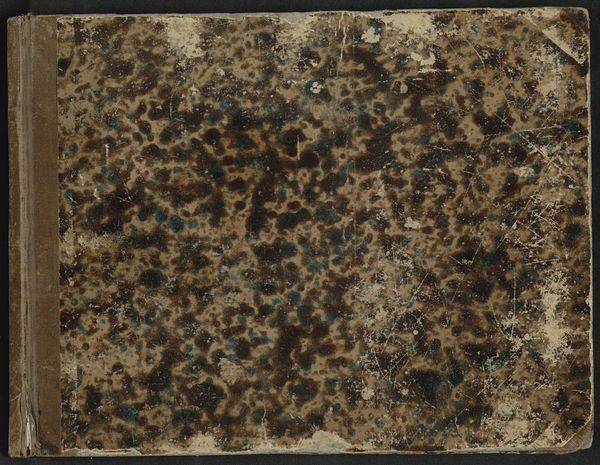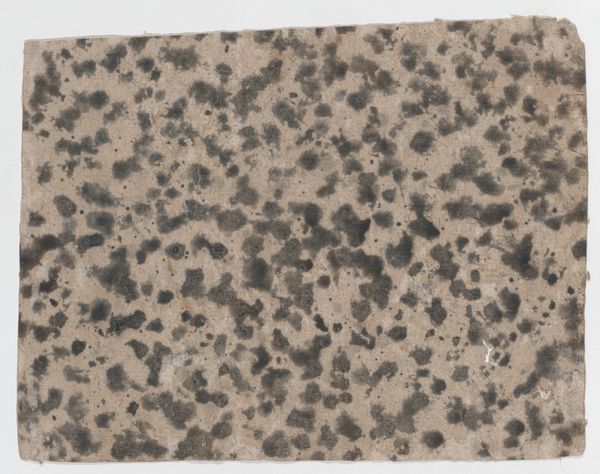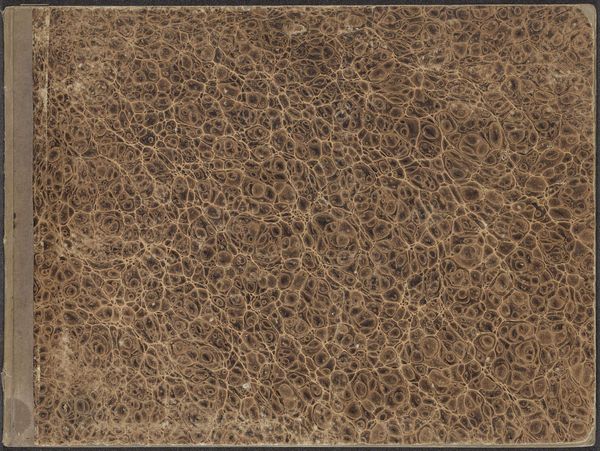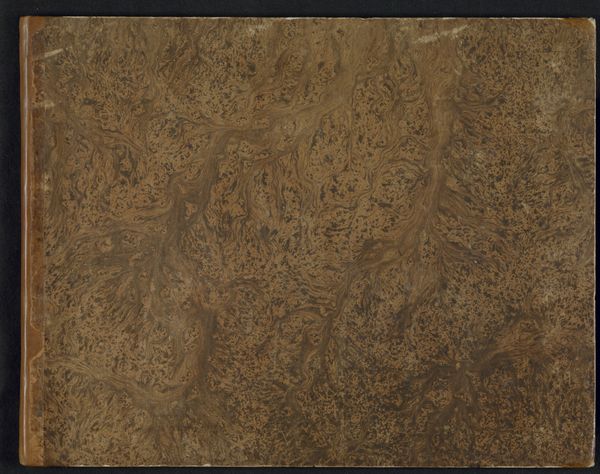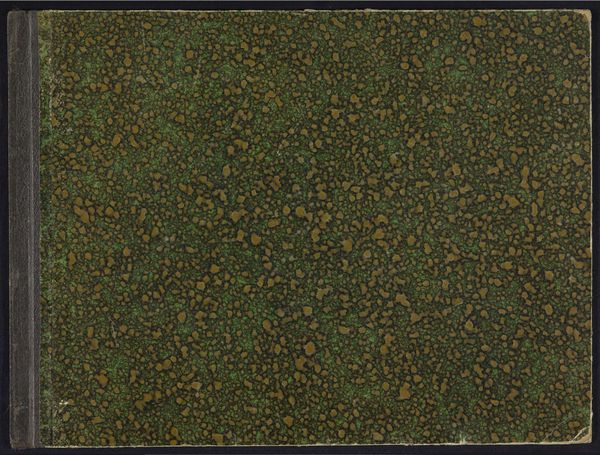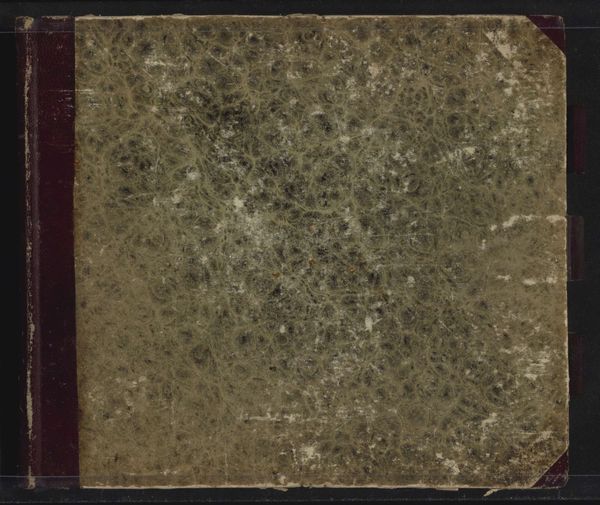
print, paper, wood
#
dutch-golden-age
# print
#
paper
#
wood
Dimensions: height 136 mm, width 184 mm, thickness 17 mm, width 377 mm
Copyright: Rijks Museum: Open Domain
Curator: This is "Album met prenten over de natuurlijke historie" attributed to Frederik (I) Bouttats, created sometime between 1635 and 1660. It resides here at the Rijksmuseum. Editor: My first impression is of earthy tones—burnt umber, sienna. The mottled texture on the cover suggests a macrocosm, like looking at constellations or maybe even microorganisms through a lens. There's a quiet intensity. Curator: Indeed. Albums such as these were not uncommon in the Dutch Golden Age, reflecting a broader societal interest in the natural world fueled by exploration and burgeoning scientific inquiry. The format of assembled prints speaks to the era's expanding print culture and accessibility of knowledge. Editor: That period was just waking up to new possibilities. Seeing nature documented visually, distributed so widely—it shifts our understanding. Were these intended for scholarly pursuits, or did a general audience also appreciate them? I'm particularly curious about the images themselves, inside the cover, that is. The cover could stand as an image of primordial stuff – something that Jung may relate to the process of self-realization. Curator: Good question. While some albums certainly served scholarly or scientific purposes, many catered to a more affluent public eager to engage with nature from an aesthetic, almost connoisseurial, standpoint. Printmaking enabled artists to reach wider audiences, shaping the visual understanding and cultural narrative around natural history, with the interplay between art and science ever present. Editor: This makes me wonder what symbolic language those prints employed. Beyond literal depictions, there would've been embedded meanings, cultural associations—things lost on us now, maybe. We think we see the straightforward illustration, but our ancestors may see the symbolic weight the flora and fauna carried then. Curator: Precisely. It encourages us to consider the layers of historical understanding needed to fully appreciate such works. An image is never simply an image, is it? Editor: Never is. Examining this artwork encourages considering historical lenses through which we engage the world. Curator: And understanding of cultural and institutional impact on image production gives further insight into it. Editor: Absolutely. A very grounding consideration.
Comments
No comments
Be the first to comment and join the conversation on the ultimate creative platform.


